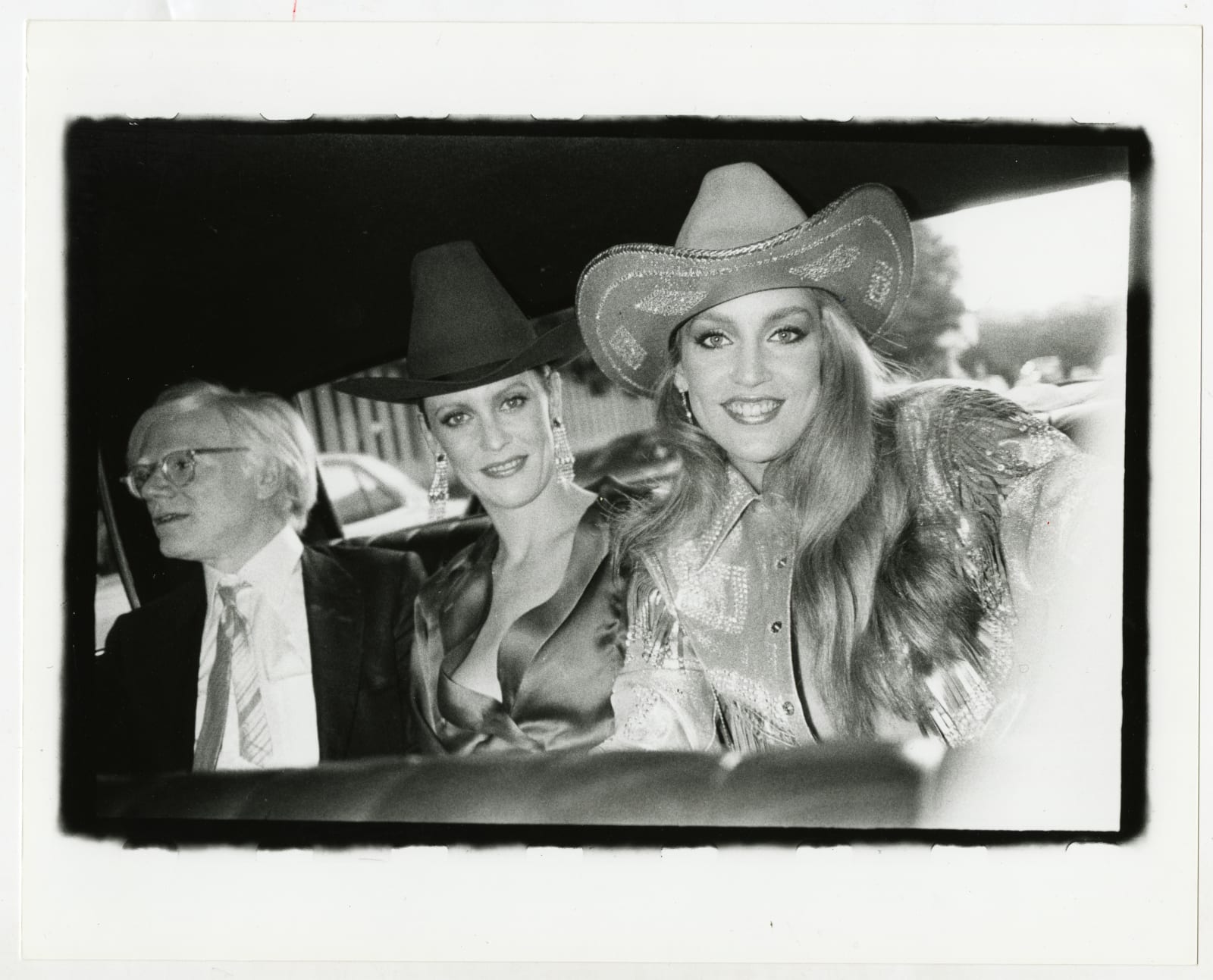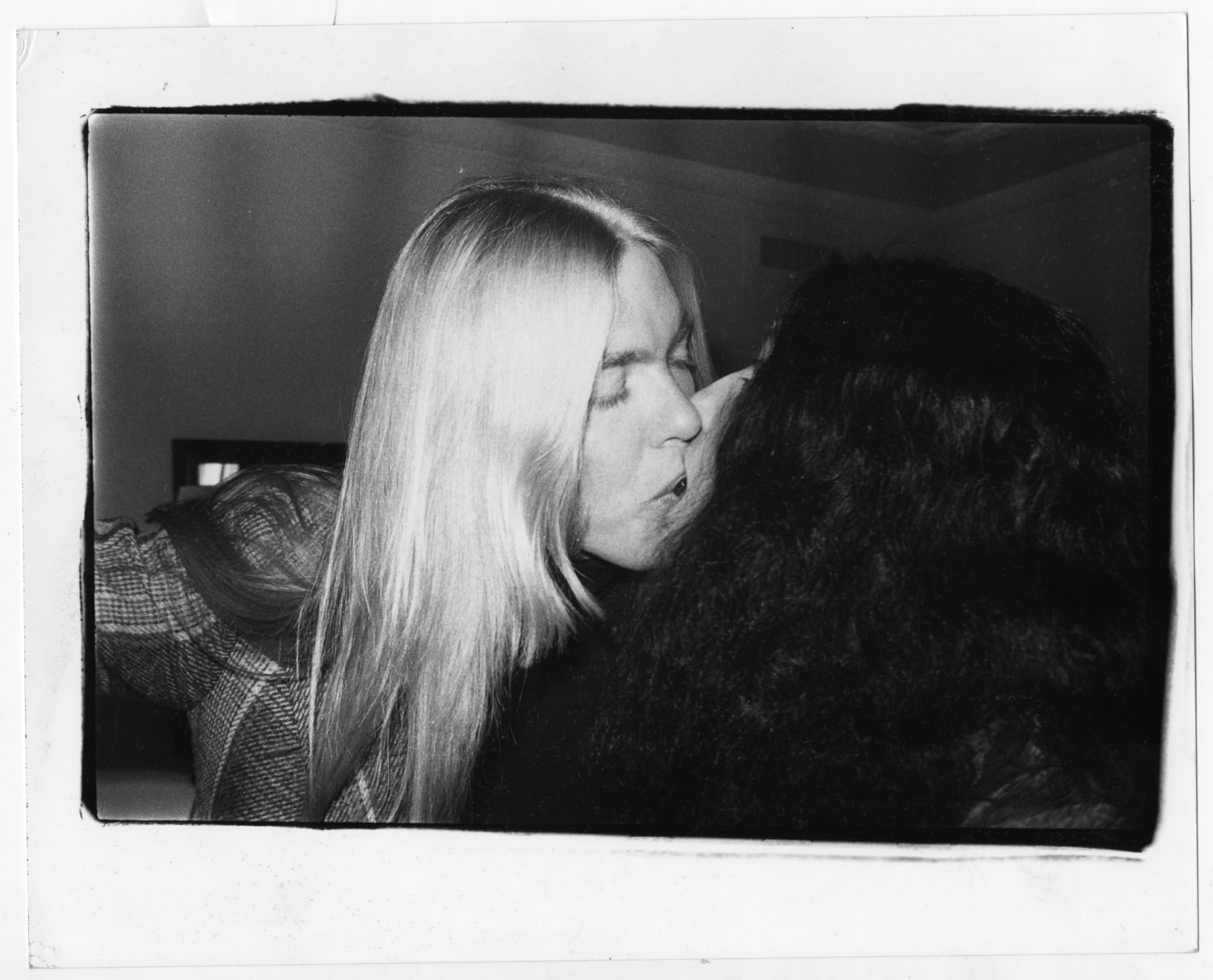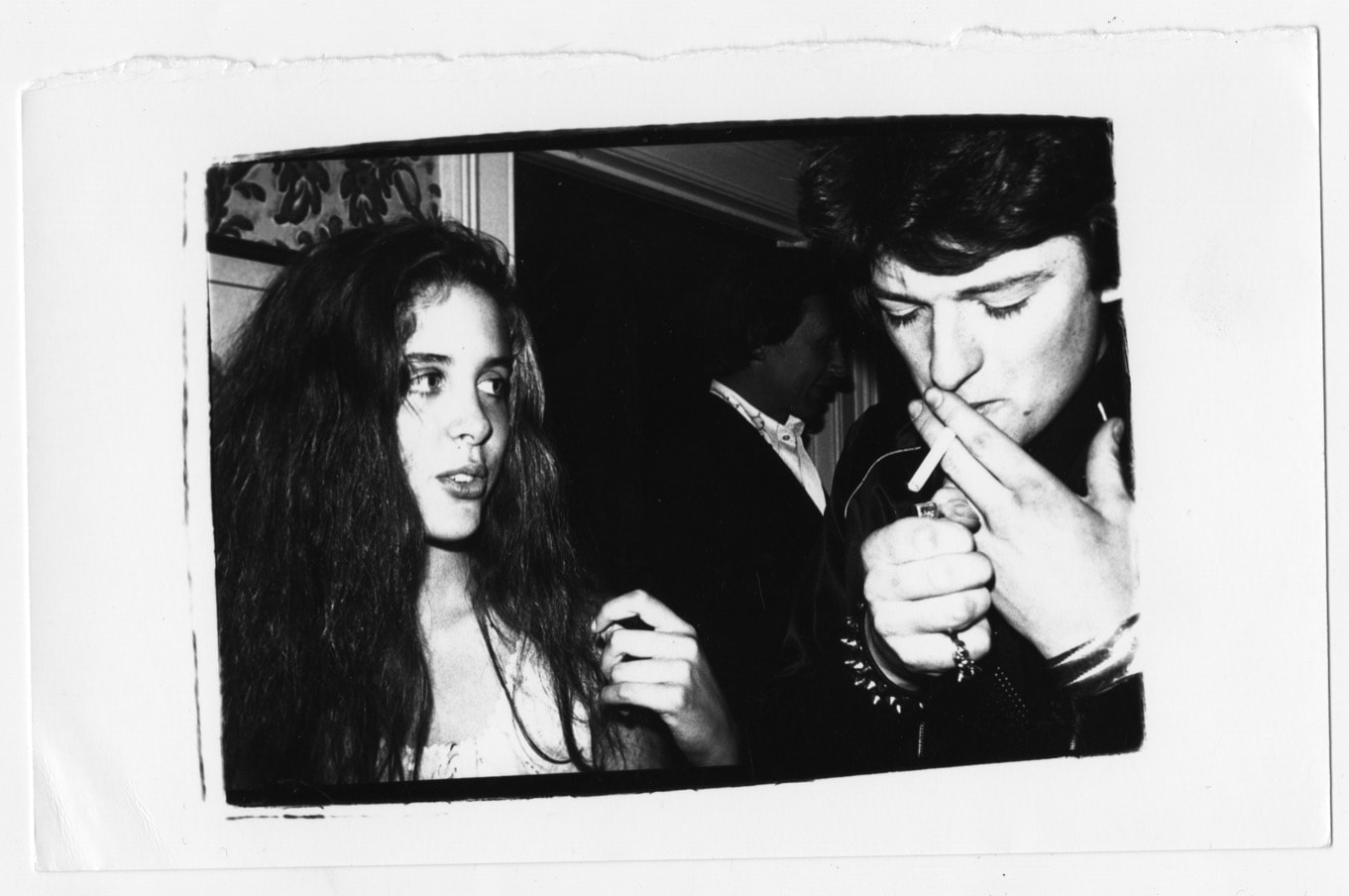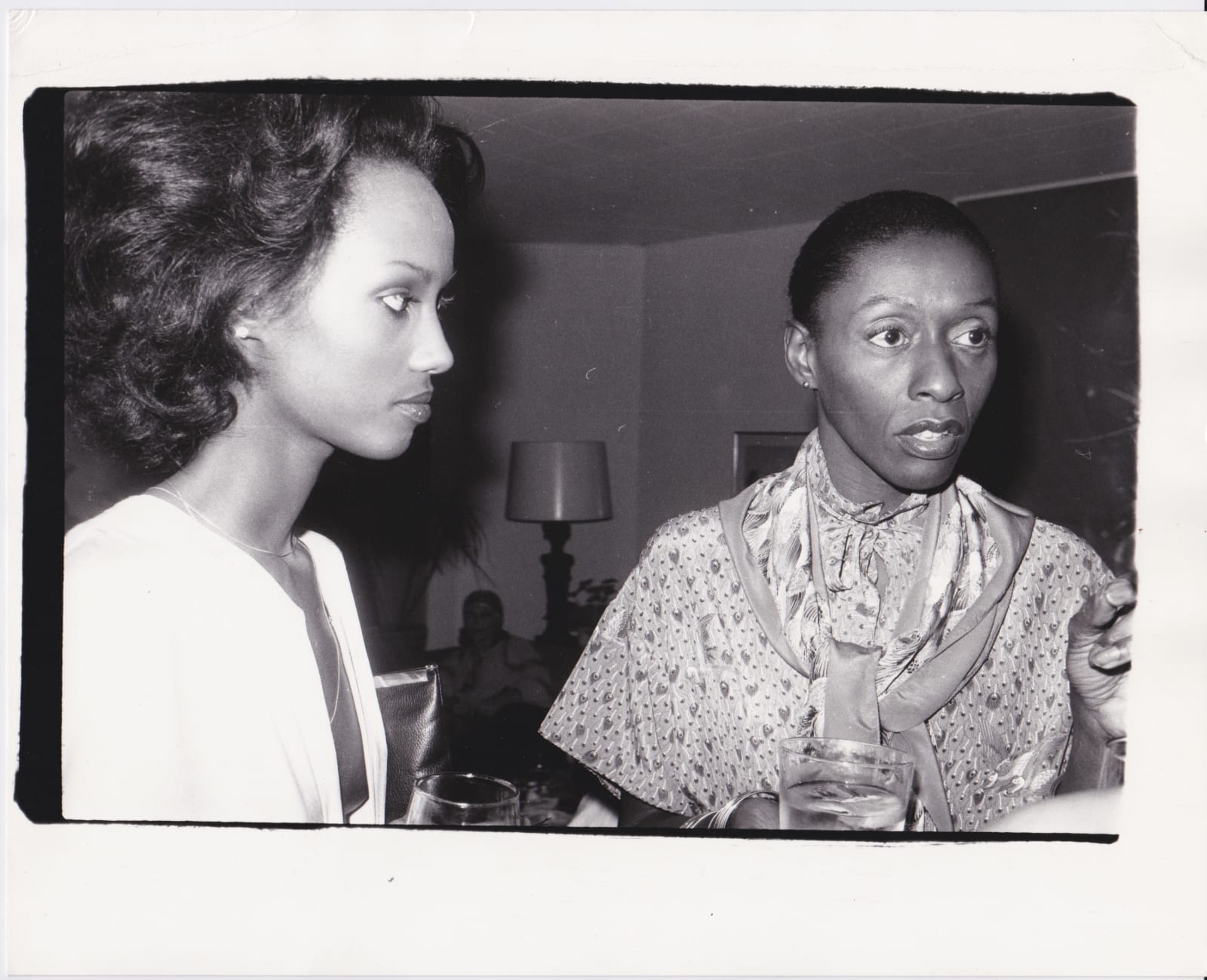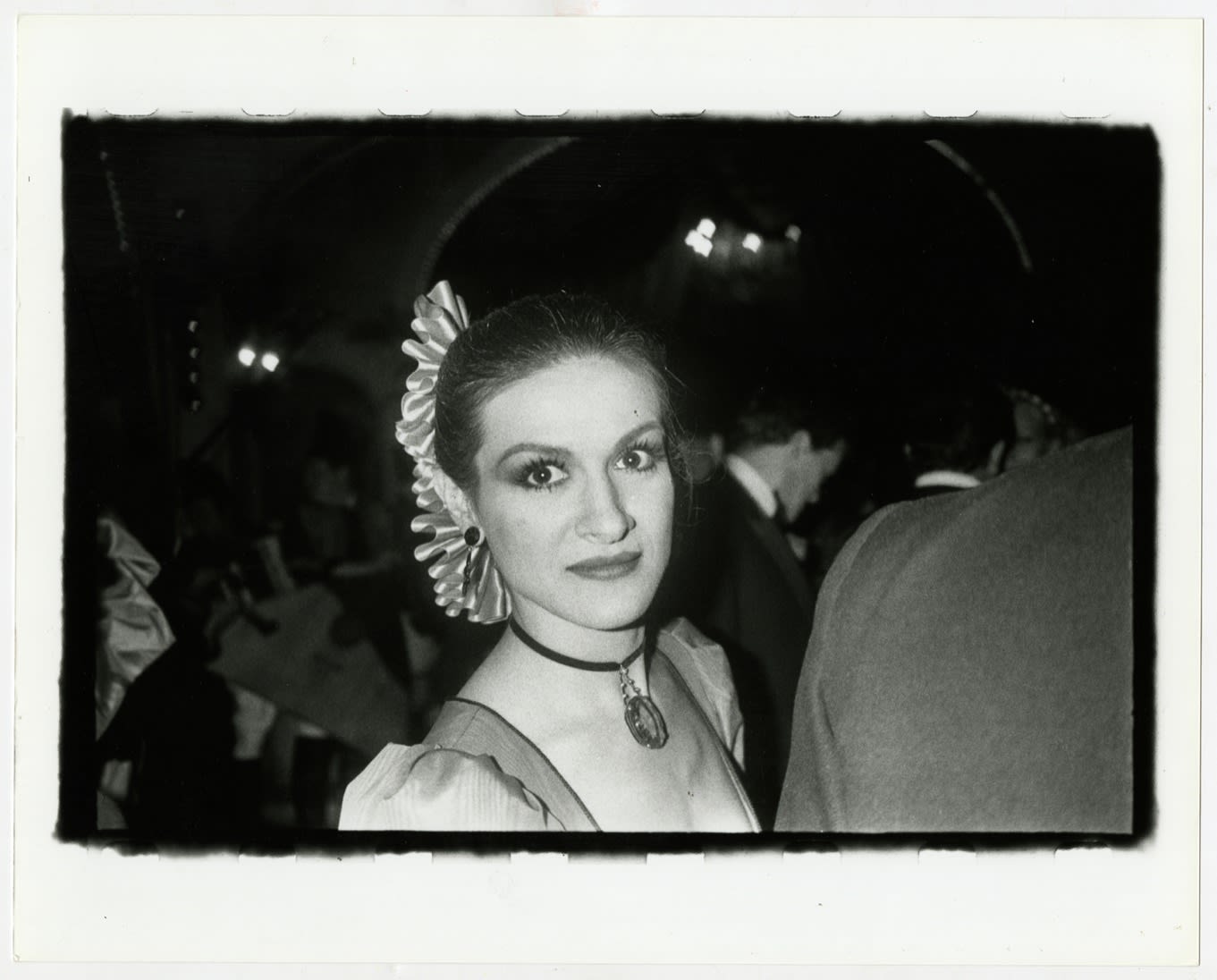

Bob Colacello It Just Happened, Photographs 1976–1982
Overview
I never planned or plotted any of this. I have, however, always followed my mother’s dictum: ‘When opportunity knocks, open the door!’ — Bob Colacello
It Just Happened is the first solo exhibition in London by the American photographer and writer Bob Colacello, documenting his long-standing collaboration with Andy Warhol during the heady cycle of parties and travelling that animated their lives in the 1970s and 1980s. Curated by Elena Foster and the Ivorypress team, the exhibition will include letters, magazines and memorabilia alongside Colacello’s photographs, which help bring to life the era’s atmosphere of hedonism and endless possibility.
Between 1971 and 1983, Colacello was the editor of Interview and Andy Warhol’s right hand at the magazine. On one of his many trips with Warhol, Colacello acquired a Minox – a tiny camera said to have been used by spies during the Cold War. From that moment on, he carried this pocket camera with him to jet-set parties, dinners and weddings held in such iconic settings as the Factory and Studio 54. In It Just Happened, Colacello shares photographs from his personal album taken between the late 1970s and early 1980s, providing an intimate and faithful chronicle of the fascinating social circle around the so-called ‘Pope of Pop’.
I never planned or plotted any of this. I have, however, always followed my mother’s dictum: ‘When opportunity knocks, open the door!’ — Bob Colacello
It Just Happened is the first solo exhibition in London by the American photographer and writer Bob Colacello, documenting his long-standing collaboration with Andy Warhol during the heady cycle of parties and travelling that animated their lives in the 1970s and 1980s. Curated by Elena Foster and the Ivorypress team, the exhibition will include letters, magazines and memorabilia alongside Colacello’s photographs, which help bring to life the era’s atmosphere of hedonism and endless possibility.
Between 1971 and 1983, Colacello was the editor of Interview and Andy Warhol’s right hand at the magazine. On one of his many trips with Warhol, Colacello acquired a Minox – a tiny camera said to have been used by spies during the Cold War. From that moment on, he carried this pocket camera with him to jet-set parties, dinners and weddings held in such iconic settings as the Factory and Studio 54. In It Just Happened, Colacello shares photographs from his personal album taken between the late 1970s and early 1980s, providing an intimate and faithful chronicle of the fascinating social circle around the so-called ‘Pope of Pop’.
Marisa Berenson, Joseph Beuys, Jacqueline Bisset, Truman Capote, Divine, Bianca Jagger, Robert Mapplethorpe, Robert Rauschenberg, Roy Lichtenstein, André Leon Talley, Catherine Guinness, Arnold Schwarzenegger, Mick Jagger, Paloma Picasso, Jerry Hall, Roy Halston, Richard Gere, Iman, Diane von Fürstenberg, Jimmy and Rosalynn Carter, Valentino, Diana Vreeland and Raquel Welch are just a number of the icons who make up the glamorous cast of Colacello’s photographs. His unique body of work captures both the disinhibiting privacy of places where access to paparazzi was restricted, and the era’s prevailing feeling of freedom.
In one of the photographs on view, the flash of Colacello’s camera is reflected in a mirror in Roy Halston’s New York townhouse, reverberating against Bianca Jagger, who is dressed in black velvet knotted around her chest, while a male hand protrudes into the frame from the left. The ambiguous composition blurs the lines between public and private: is this a dressing room, or is the actress outside, being swarmed by paparazzi? Elsewhere, Robert Rauschenberg is portrayed with his right arm out of shot as he shares the frame with a painting by Georgia O’Keeffe and a small Buddhist statuette. Warhol, meanwhile, is seen sitting in his hotel room eating breakfast in what Colacello acerbically describes as Warhol’s ‘regular sleeping attire – Brooks Brothers shirt, Jockey shorts and Supp-hose socks.’
These ‘stolen’ snapshots, with unexpected framing and overexposed lighting, demonstrate Colacello’s rebellious spirit and disregard for photography’s formal conventions of symmetry, exposure and balance. ‘It just happened that at the parties we were constantly going to in New York, Los Angeles, Paris and London, lesser-known people kept blocking my view of better-known people, but I took the picture anyway, because I realised parties were like that, producing a layered look that I came to see as my style.’ It is in this subversive attitude and irrepressible rhythm that lies the photographer’s contribution to his medium: the construction of a new aesthetic identity within the photojournalistic genre of the 1970s and 1980s.
It just happened that in 1970, while I was a graduate student at Columbia School of the Arts, Andrew Sarris, professor of film criticism and lead film critic for The Village Voice, New York's influential political and cultural weekly, started publishing the reviews I wrote as homework assignments in the paper. It just happened that Andy Warhol and Paul Morrissey, the director of many of Andy's films, read these reviews and had Soren Agenoux, the editor of their new magazine, Interview, call me and ask if I would consider writing for them.
— Bob Colacello
It just happened that I was soon accompanying Andy and his manager Fred Hughes on business trips to Europe… It just happened that on one of those trips, the young Zurich art dealer Thomas Ammann showed up at Andy's hotel suite with the brand-new Minox 35 EL, the first miniature camera to take full-frame photos. [We] each bought our own little spy camera, which were matte-black plastic and looked very 007.
— Bob Colacello
It just happened that at the parties we were constantly going to in New York, Los Angeles, Paris and London, lesser-known people kept blocking my view of better-known people, but I took the picture anyway, because I realized parties were like that, producing a layered look that I came to see as my style.
— Bob Colacello
Watch a teaser of the exhibition

I started realising that tilting the camera sometimes made it seem more like a party, made it seem more like I was drunk or something. I always just wanted to capture people at a moment.
— Bob Colacello
Forget your faded old photographs: the red eyes and flushed faces of people you are no longer friends with, the dishevelled frocks that are decades out of fashion, the mad antics of which you have long forgotten the point. From the beginning of the Seventies until 1982, Colacello was right at the centre of Andy Warhol’s bright circle. His haphazard snapshots of film stars and socialites, designers and drag queens, Park Avenue hostesses and their mega-rich husbands, bohemian beauties and various handsome hangers-on capture the spirit of a devil-may-care age that has gone.
— The Times
